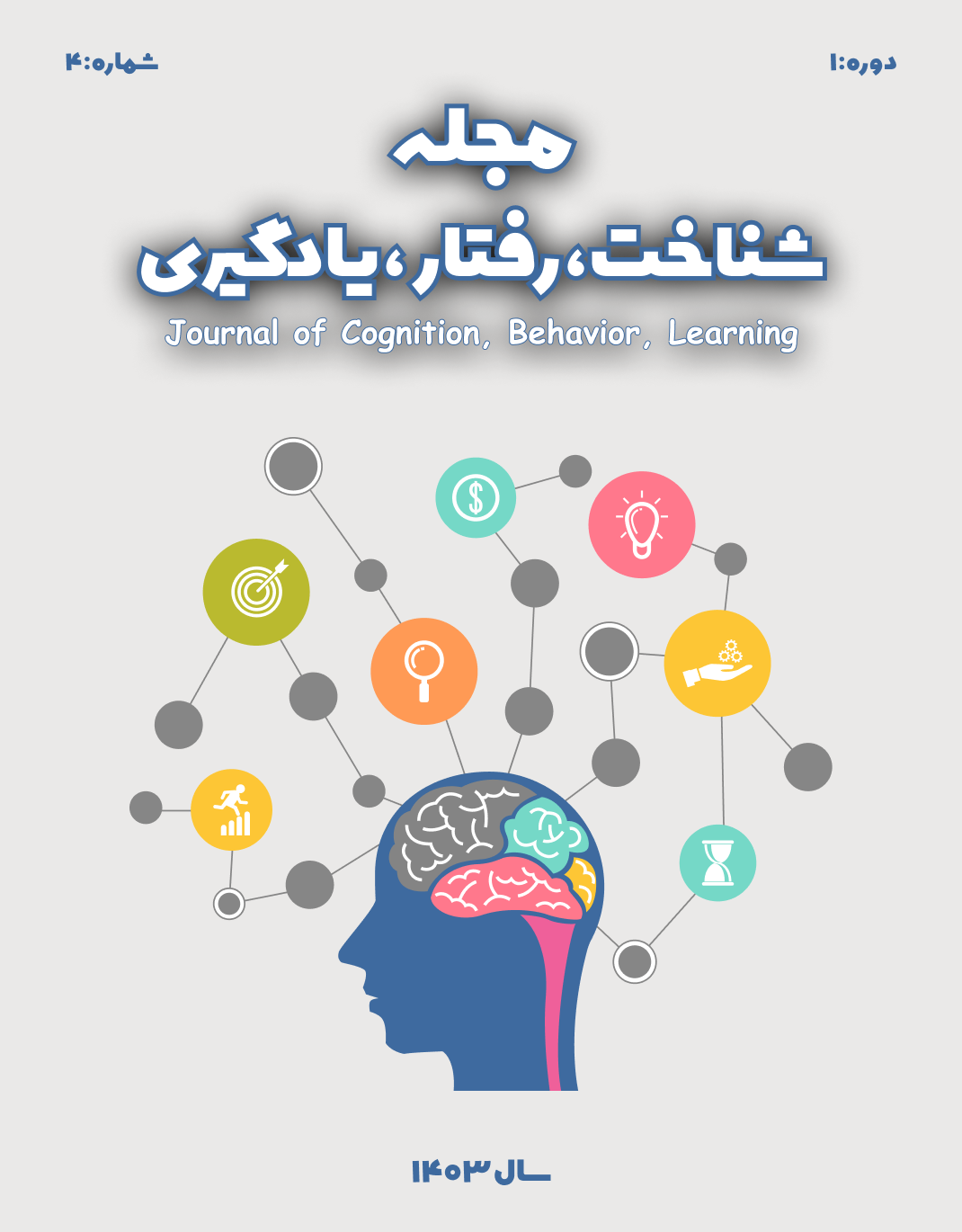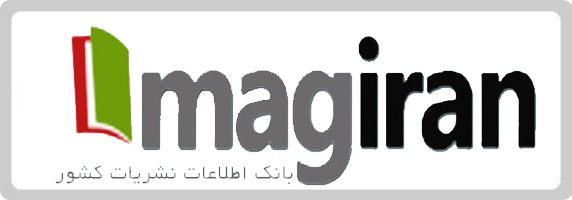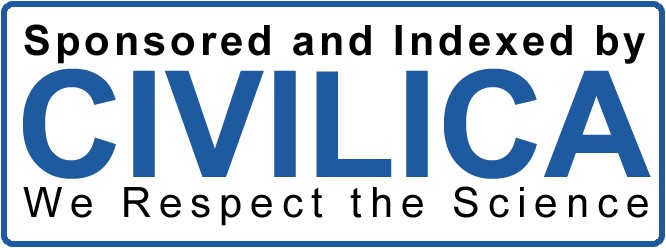بررسی تأثیر حیاط پویا مبتنی بر رویکرد دانش مدیریت ورزشی بر سبک یادگیری دانشآموزان دختر دوره متوسطه اول شهرستان میاندرود
کلمات کلیدی:
حیاط پویا, مدیریت ورزشی, سبک یادگیریچکیده
هدف پژوهش حاضر، بررسی تأثیر حیاط پویا مبتنی بر رویکرد دانش مدیریت ورزشی بر سبک یادگیری دانشآموزان دختر دوره متوسطه اول شهرستان میاندرود بود. در این مطالعه کیفی- کمی، جامعه آماری بخش کیفی شامل شامل مدیران ارشد و خبرگان آموزش و پرورش استان مازندران به تعداد 20 نفر بود که تعداد 10 نفر بر اساس قانون اشباع نظری به عنوان نمونه آماری در نظر گرفته شد. همچنین جامعه آماری بخش کمی شامل دانشآموزان دختر پایه نهم دوره متوسطه اول بود که در سال تحصیلی 1403-1402 به تعداد 950 نفر مشغول به تحصیل بودند که بر اساس فرمول کوکران، تعداد 273 نفر با روش نمونهگیری تصادفی به عنوان نمونه آماری انتخاب شدند. جهت جمعآوری دادهها در بخش کیفی از مصاحبه نیمه ساختاریافته و در بخش کمی از پرسشنامه محقق ساخته حیاط پویا مبتنی بر دانش مدیریت ورزشی و سبک یادگیری توولر و دیبوی (2003) با 54 سوال استفاده شد. نتایج نشان داد حیاط پویا مبتنی بر رویکرد دانش مدیریت ورزشی با ضریب استاندارد 64/0 بر سبک یادگیری دانشآموزان تأثیر مستقیم و معناداری دارد. همچنین مقدار t-value محاسبه شده بین دو متغیر برابر 20/8 میباشد که میتوان نتیجه گرفت که تاثیر حیاط پویا مبتنی بر رویکرد دانش مدیریت ورزشی بر سبک یادگیری دانشآموزان دختر دوره متوسطه اول شهرستان میاندرود مثبت و معنادار میباشد. به طور کلی میتوان گفت که حیاط پویا با رویکرد مدیریت ورزشی نهتنها یک محیط سالم و امن برای فعالیت بدنی است، بلکه محیطی یاددهنده و یادگیرنده است که از طریق تجربه، مشارکت و تعامل فعال، سبکهای یادگیری را تقویت، تنوعبخشی و توسعه میدهد. تأکید بر این نوع طراحی محیطی در مدارس، گامی در جهت تحقق یادگیری کلنگر، شاداب و ماندگار برای نسل آینده محسوب میشود.
دانلودها
مراجع
Aminifar, Z., & Azmati, H. R. (2022). The role of physical characteristics of the schoolyard in increasing children's physical activity, a study of the perspectives of 8-12 year old students in Tehran. Armanshahr Architecture and Urban Planning, 15(41), 17-27. https://www.armanshahrjournal.com/%20http:/www.armanshahrjournal.com/article_168900.html?lang=fa
Berezowitz, C., Bontrager Yoder, A., & Schoeller, D. (2015). School gardens enhance academic performance and dietary outcomes in children. J Sch Health, 85(8), 508-518. https://doi.org/10.1111/josh.12278
Bratman, G. N., Hamilton, J. P., & Daily, G. C. (2012). The impacts of nature experience on human cognitive function and mental health. Ann NY Acad Sci, 1249, 118-136. https://doi.org/10.1111/j.1749-6632.2011.06400.x
Cryan, M. (2023). Student engagement in sport management learning communities. Int J Sport Manag Educ, 11(2), 45EP - 58. https://journals.humankinetics.com/view/journals/smej/11/1/article-p24.xml
Daily, G. C., Bratman, G. N., & Hamilton, J. P. (2015). Nature contact and cognitive restoration in students: Experimental evidence. J Environ Psychol, 42, 1-9. https://link.springer.com/article/10.1007/s10648-022-09658-5
Dilbil, A., & Basaran, Z. (2018). School yard playgrounds questionnaire development and validation. Eur J Sport Sci, 18(7), 937-945. https://scholar.google.com/scholar?
Dyson, B., Baek, S., Howley, D., Lee, Y., & Fowler, J. (2024). Students’ Perspectives of Social and Emotional Learning in a High School Physical Education Program. Journal of Teaching in Physical Education, 43(4), 549-556. https://doi.org/10.1123/jtpe.2023-0090
Faruk, M. (2025). The interventions of physical education by using augmented reality based mobile learning can significantly improve gross motor skills in elementary school students. Retos. https://doi.org/10.47197/retos.v64.111727
Fizi, R. (2023). A game model in physical education to improve motor skills, cooperation, and discipline of primary school learners. Pedagology and Physical culture, 27(6). https://doi.org/10.15561/26649837.2023.0602
Fraser Thomas, J. L., Côté, J., & Deakin, J. (2005). Youth sport programs: An avenue to foster positive youth development. Phys Educ Sport Pedagog, 10(1), 19-40. https://doi.org/10.1080/1740898042000334890
Gibbs, L., Straiger, P., & Johnson, B. (2013). Expanding children's food experiences: The impact of a school-based kitchen garden program. J Nutr Educ Behav, 45(2), 137-146. https://doi.org/10.1016/j.jneb.2012.09.004
Howes, J. M. (2014). Sport management experiential learning: Faculty perceptions of value. Ohio Press. https://scholarworks.bgsu.edu/cosma/vol1/iss1/1/
Howes, J. M., & Durham, T. M. (2016). Practical application in sport management internships. Sport Manag Educ J, 2IS - 1, 5-14. https://www.tandfonline.com/doi/abs/10.1080/16184740408737478
Lorenz, L., Henderson, J. L., & Gall, M. (1998). The influence of outdoor schoolyard experiences on students' environmental knowledge, attitudes, behaviors and comfort levels. Environ Educ Res, 4(2), 157-167. https://www.jstor.org/stable/43155742
Lucia, C., Benjamin, M., Dabbs, S., & Cryan, M. (2023). Why living in a sport management learning community matters. Sport Insights J, 2(1), 17-28. Why living in a sport management learning community matters
Moslehi, L., & Davari, F. P. (2023). Providing a qualitative model of professional development for student teachers of physical education. Educational and School Studies, 12(4), 83-110. https://pma.cfu.ac.ir/mobile/article_3446.html?lang=fa
Mualem, R., Leisman, G., & Zbedat, Y. (2018). The effect of movement on cognitive performance. Front Public Health, 6, 112. https://doi.org/10.3389/fpubh.2018.00100
Mualem, R., Leisman, G., Zbedat, Y., Ganem, S., & Mualem, O. (2018). The effect of movement‐based learning in early childhood education. Front Public Health, 6, 112. https://doi.org/10.3389/fpubh.2018.00100
Ohly, H., Gentry, S., & Wigglesworth, R. (2016). A systematic review of the health and well being impacts of school gardening: synthesis of quantitative and qualitative evidence. BMC public health, 16, 286. https://doi.org/10.1186/s12889-016-2941-0 10.1186/s12889-016-3736-z
Ozer, E. J. (2007). The effects of school gardens on students and schools: Conceptualization and considerations for maximizing healthy development. Health Educ Behav, 34(6), 846-863. https://doi.org/10.1177/1090198106289002
Panganiban, T. D. C., Tagare, R. L., Aquino, J. M., Prevandos, F. G., Mañalac, E. R., Payumo, A., Sinag, J. M., Quibral, J., Longakit, J., García, A., Ballera, J. D., Celestial, E., Setiawan, E., & Lobo, J. (2025). Strengthening Future Educators: How School Climate Shapes Academic Resilience in Physical Education Teacher Education Students. Sportis Scientific Journal of School Sport Physical Education and Psychomotricity, 11(2), 1-28. https://doi.org/10.17979/sportis.2025.11.2.11366
Petitpas, A., Cornelius, A., Van Raalte, J., & Jones, T. (2005). A framework for planning youth sport programs that foster psychosocial development. Sport Psychol, 19, 63-80. https://doi.org/10.1123/tsp.19.1.63
Primo, L., González-Hernández, J., Yang, Y., & López de Subijana, C. (2023). Predicting social skills in disadvantaged Chinese high school students through physical education. Frontiers in psychology, 14, 1149223. https://doi.org/10.3389/fpsyg.2023.1149223
Rojo-Ramos, J., Gómez-Paniagua, S., Adsuar, J. C., Mendoza-Muñoz, M., Castillo-Paredes, A., Denche-Zamorano, Á., García-Gordillo, M. Á., & Barrios-Fernández, S. (2023). Attitudes Towards Peers With Disabilities Among Schoolchildren in Physical Education Classes. International journal of environmental research and public health, 20(5), 3802. https://doi.org/10.3390/ijerph20053802
Vujičić, L., Peić, M., & Petrić, V. (2020). Representation of movement based integrated learning in different physical environments of an early education institution. Rev Elem Educ, 13(1), 67-82. https://doi.org/10.18690/rei.13.4.453-474.2020
Wood, C., Bragg, R., & Barton, J. (2013). A repeated measures experiment of green exercise to improve self esteem in UK school children. PLoS One, 8(7). https://doi.org/10.1371/journal.pone.0069176
Xue, R., Chai, H., Yao, L., & Fu, W. (2023). The Influence of School Inclusive Education Climate on Physical Education Teachers’ Inclusive Education Competency: The Mediating Role of Teachers’ Agency. Frontiers in psychology. https://doi.org/10.3389/fpsyg.2023.1079853
Zhu, J. (2023). An Instructional Model for Physical Education in the Next Era for Secondary School. Ijsasr, 3(5), 323-334. https://doi.org/10.60027/ijsasr.2023.3364
دانلود
چاپ شده
ارسال
بازنگری
پذیرش
شماره
نوع مقاله
مجوز
حق نشر 2025 سارا توپا ابراهیمی (نویسنده)

این پروژه تحت مجوز بین المللی Creative Commons Attribution-NonCommercial 4.0 می باشد.





